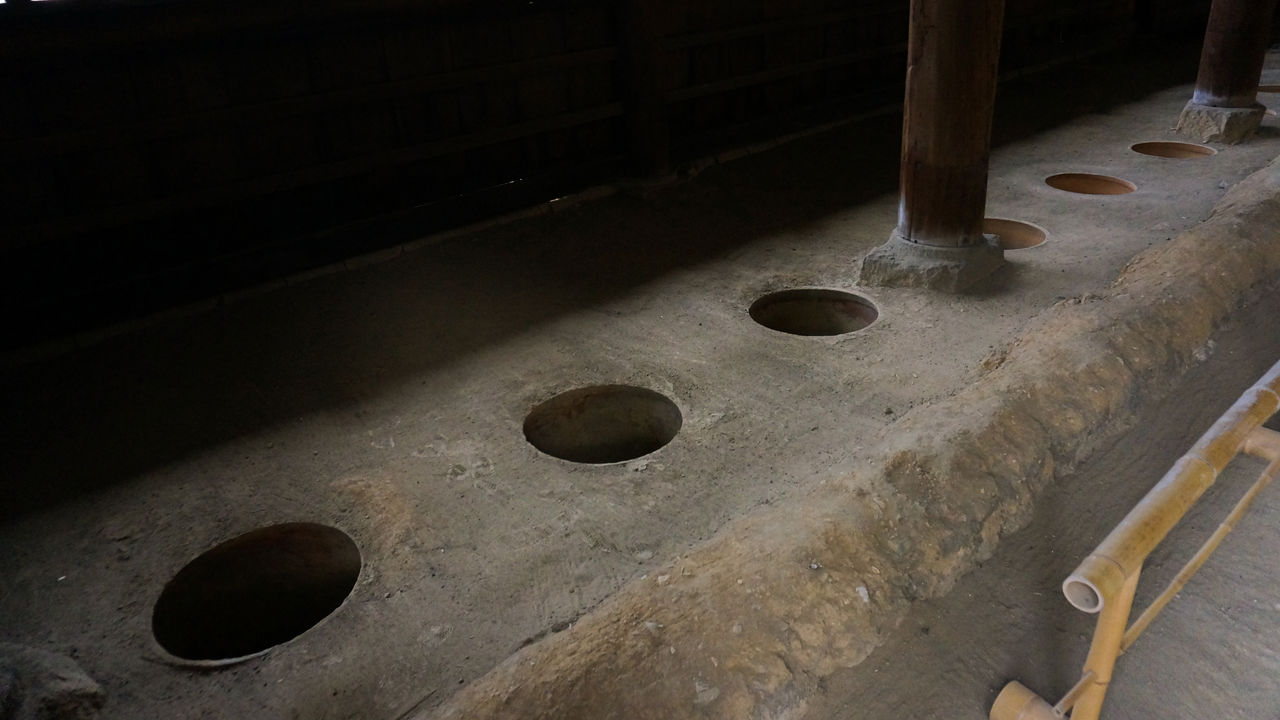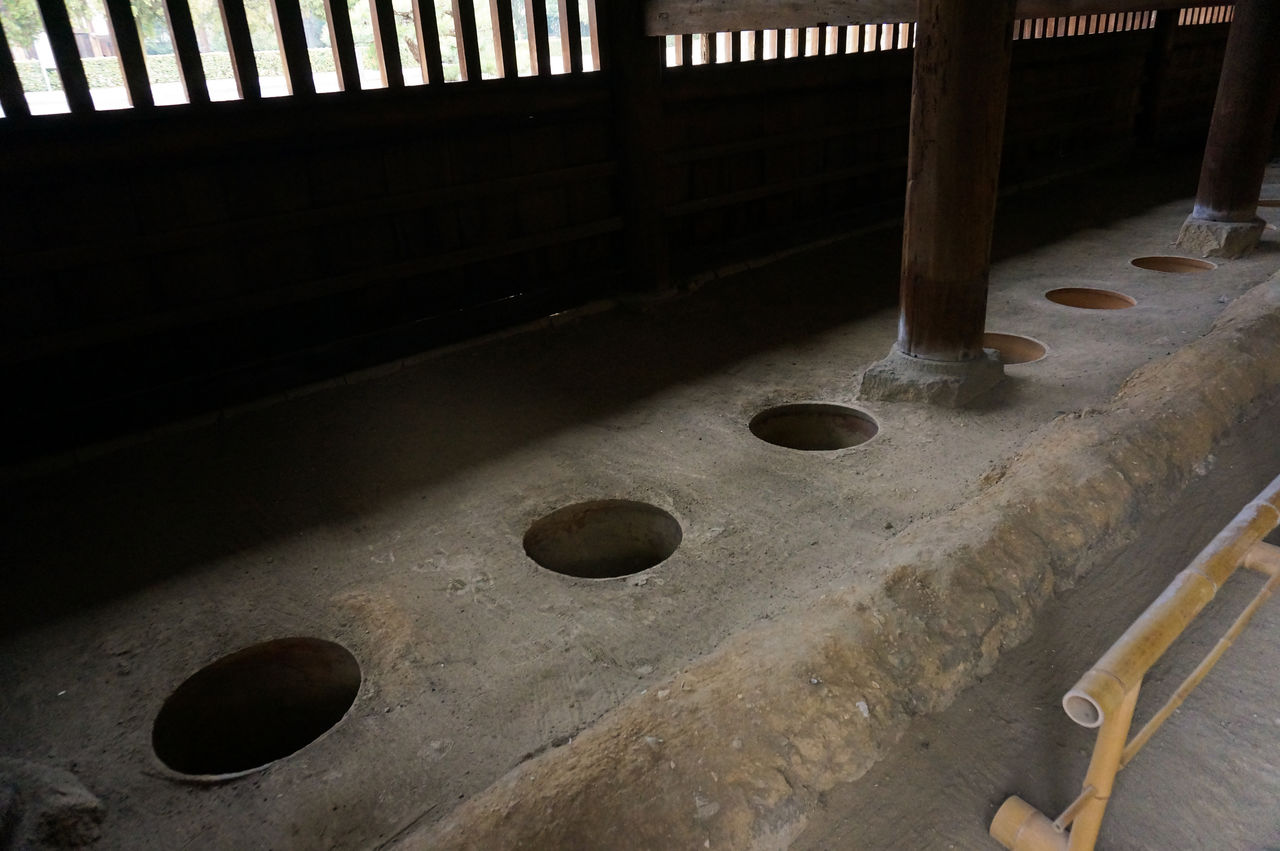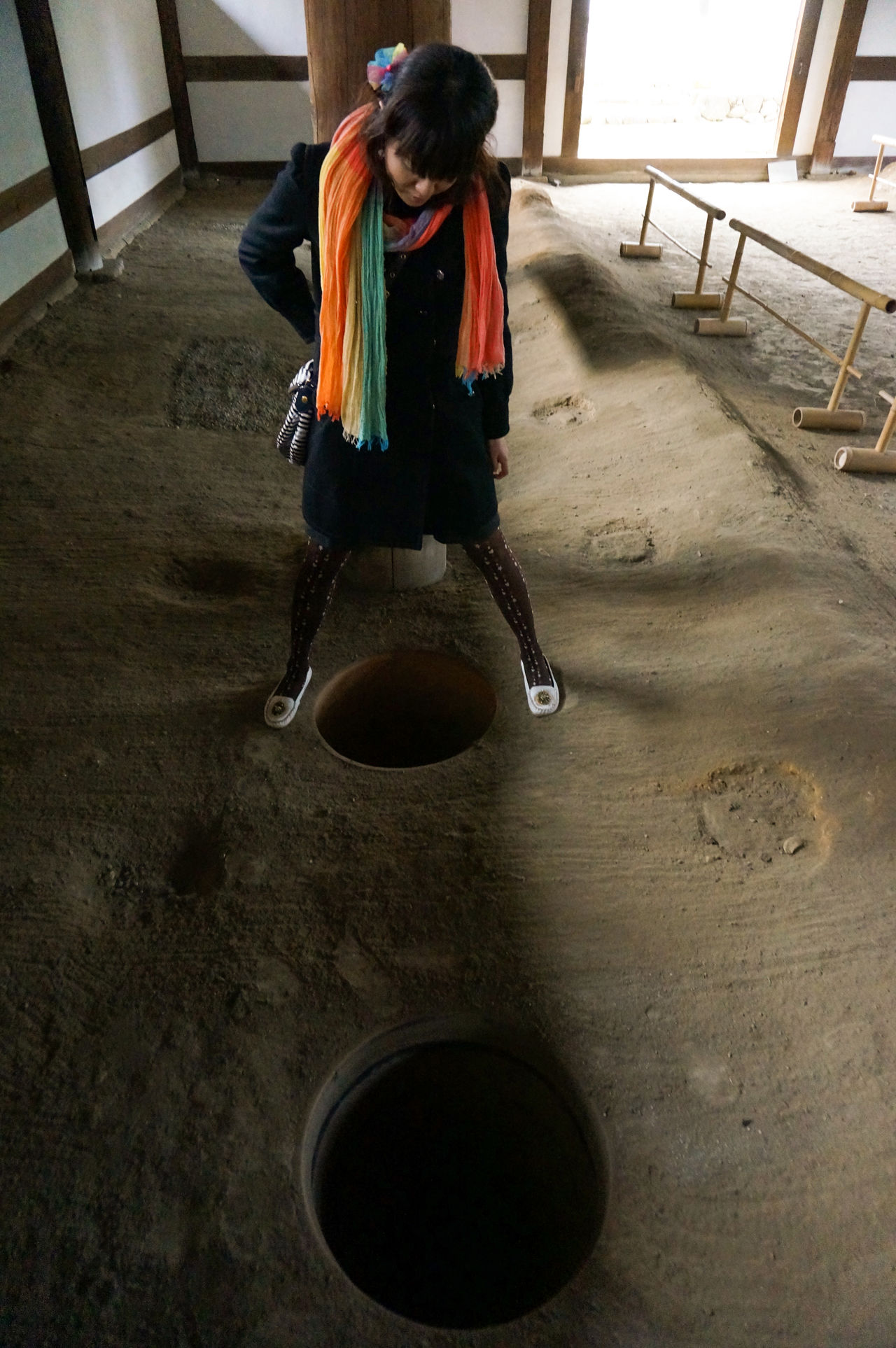
The “Tōsu” of Tōfukuji: Japan’s Oldest Toilet
Guideto Japan
- English
- 日本語
- 简体字
- 繁體字
- Français
- Español
- العربية
- Русский
A Simple Toilet with a Long History
The world’s oldest toilet is generally thought to be a seat-like structure excavated in Iraq’s Tell Asmar. Dating back to around 2200 BC, the brick commode was clearly designed to be used sitting down and utilized water to carry away waste.
Remnants of latrines have been discovered in Japan that date back 5,500 years, but the title of the oldest extant lavatory belongs to a centuries-old structure at Tōfukuji, a temple of the Rinzai sect of Zen in Kyoto. The austere toilet, called a tōsu in Zen parlance, sets on the temple’s expansive grounds just south of the zendō meditation hall.
 Regularly spaced holes line both sides of the ancient privy.
Regularly spaced holes line both sides of the ancient privy.
Tōfukuji’s tōsu was constructed in the early Muromachi period (1333–1568). Designated an Important Cultural Property, it is no longer in use today. Although cordoned off, I was able to secure special permission to examine this remarkable space. Straddling one of the pits in the dark interior of the building, I tried to imagine shuffling crowds of ancient monks using these spartan facilities.
Inside the tōsu are long lines of primitive, evenly spaced holes running the length of the building on both sides. There are two types of holes, deep ones for solid waste and shallower pits for urine. The large scale of the tōsu earned it the nickname hyakusecchin, or “hundred-person toilet.” Standing in this austere environment evokes the image of a hundred monks doing their business.
 The author straddles a one of the squatters in the hyakusecchin.
The author straddles a one of the squatters in the hyakusecchin.
The waste was a precious commodity that was later gathered and used as fertilizer for the fields on the temple grounds. The night soil was also sold to neighboring farmers, providing an important revenue stream for Tōfukuji.
The tōsu is an important aspect of the Zen tradition and is counted among the shichidōgaran, the seven indispensable buildings found at every Zen complex. Among the seven structures, the zendō meditation hall, the yokushitsu bath building, and the tōsu are referred collectively as the sanmokudō, or “the three silent halls,” places where speaking is forbidden. In Zen complexes like Tōfukuji, even the tōsu is part of the rigorous discipline of the Zen monk in training.
Related article › Japan’s Top 12 Restrooms
(Originally published in Japanese. All photos by author.)
